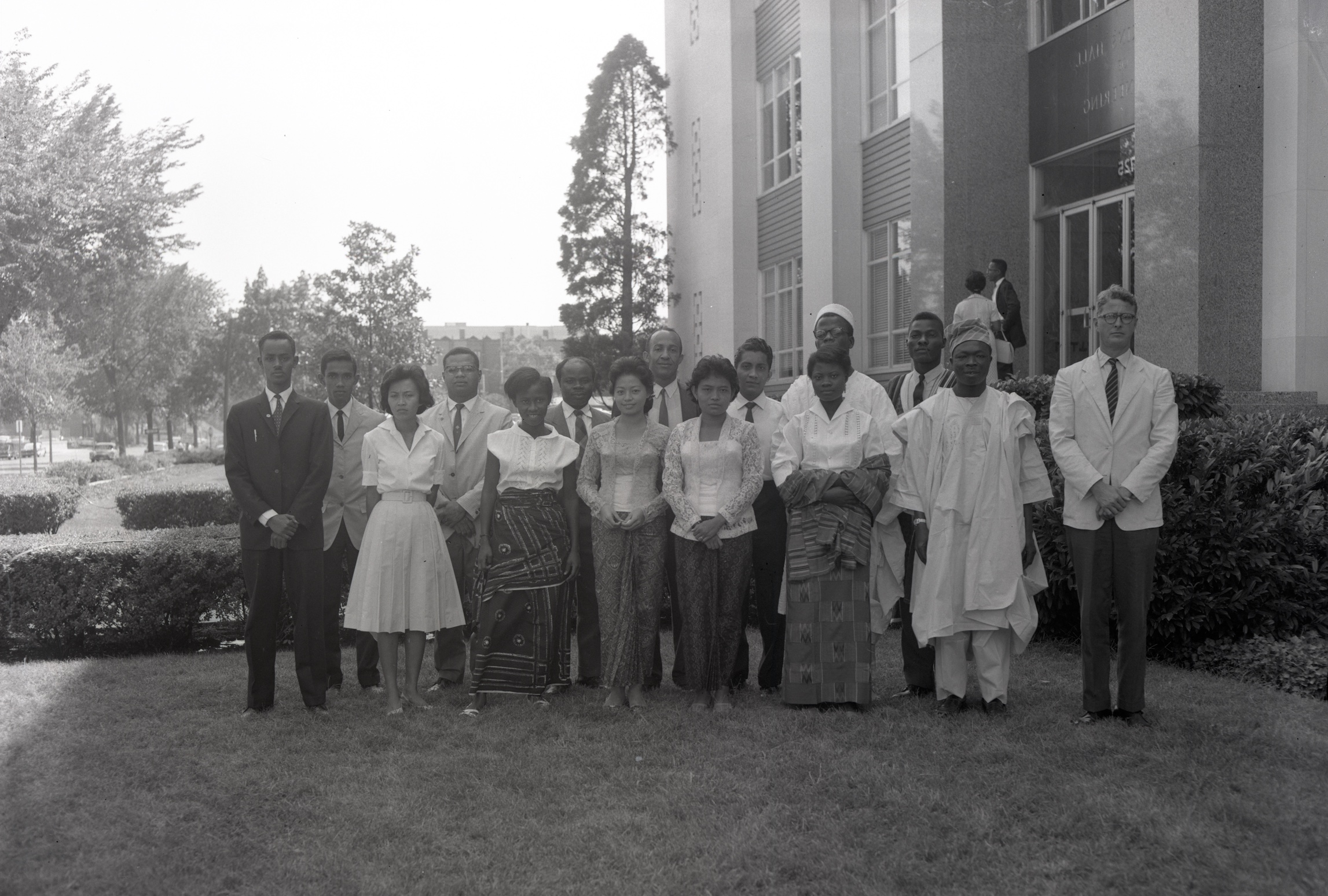When the Corcoran Scientific School, now known as GW’s School of Engineering and Applied Science (GW Engineering), was founded in 1884, the United States had emerged from the Industrial Revolution as a global leader in scientific and technological innovation. At the time, innovations like the incandescent light bulb, electric fans, roller coasters, and skyscrapers were revolutionizing American life.
William Corcoran founded the school in response to these thrilling sociotechnical advancements and to establish the nation’s capital as an interdisciplinary center of scientific discovery. The school’s strategic location in Washington, D.C. has been core to its identity since its founding and has cemented GW Engineering as an institution fueled by commitments to discovery and innovation, educational excellence and student success, partnerships across disciplines and organizations, and - above all - societal impact.
Women comprise 45% of the undergraduate student body at GW Engineering today, over twice the national average, but this is nothing new – women have been an integral part of GW Engineering’s history since its founding. The first graduating class of the Corcoran Scientific School was comprised of six students, two of whom were women: Elizabeth Preston Brown and Louise Connolly. The full participation of women in the earliest Corcoran degree programs was groundbreaking – at the time, many higher education institutions still excluded women from enrolling and earning degrees, especially those related to science and mathematics.

GW Engineering was one of the first institutions to accept women for degree candidacy in engineering. The first woman to graduate from GW with an engineering degree was Marjorie Rhodes Townsend, who graduated from GW in 1951 with a Bachelor of Electrical Engineering. In 1959, Townsend became one of the first female engineers to join NASA, and within the next decade, she was named the first female spacecraft project manager at NASA’s Goddard Space Flight Center in nearby Greenbelt, Maryland.

Women like Elizabeth Preston Brown, Louise Connolly, and Marjorie Rhodes Townsend exemplify GW Engineering’s everlasting commitment to empowering students of all backgrounds to become professionals who serve their communities and the world. GW Engineering has long prided itself on providing students with the tools to develop meaningful skills and partnerships, which often position students to be on the cutting edge of scientific and technological advancements.
By the time World War 2 arrived on America’s doorstep, the U.S. military urgently needed to educate its new officers. GW Engineering answered the charge and developed a strong partnership with the military’s Office of Scientific Research and Development to provide highly specialized, intensive technical education. Located only a few blocks from the office’s headquarters, GW Engineering was uniquely positioned to provide critical wartime support not only to the D.C. community but to the country and the world.

At the height of these programs, GW Engineering was educating roughly 2,000 military officers every fifteen weeks. During the war, Dean Frederick Morris Feiker used his dean’s message in the Mecheleciv, a former GW Engineering publication, to uplift students and remind them of the impact the school was having on the community, country, and world. In a May 1944 edition, Dean Feiker noted that although the immediate future was uncertain, “the future of the School of Engineering, as a part of an enlarged George Washington University, [was] very real.” GW had cemented its place as an institution that prioritizes the safety of our communities and trains highly skilled, service-oriented public servants.

GW Engineering’s role in World War 2 was not just limited to providing technical education but involved critical partnerships with industry and the military to develop essential, revolutionary technologies. GW Engineering faculty and students played an integral role in developing the recoilless anti-tank rifle, also known as the Bazooka, as well as short-range cannons and elements of small rockets. In this work, GW faculty and students collaborated with a California Institute of Technology research group that would eventually become NASA’s esteemed Jet Propulsion Laboratory.
By the war's conclusion, GW Engineering was one of the foremost contributors to national security research. Over its storied history, GW Engineering has maintained these pivotal partnerships with partners across government, industry, and academia and retained GW’s position as a key player in answering our world’s complex sociotechnical problems with innovative solutions.
GW Engineering has been committed to the ethos of “Engineering and…” since 1884. Our commitments to discovery and innovation, educational excellence and student success, partnerships across disciplines and organizations, and societal impact have remained steadfast and have evolved over time alongside our changing world, community, university, and school. GW Engineering has become what William Corcoran always hoped it would – an interdisciplinary hub for scientific discovery focused on engineering and – located right in the heart of the nation’s capital.


